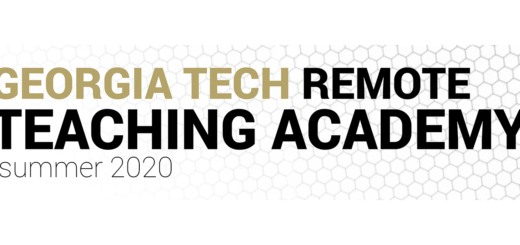Inclusive Pedagogy as the Bare Minimum

Series Overview:
‘On The Pedagogy of Belonging’ is a seven-part series of essays written by Julian Rose for the Georgia Institute of Technology Center for Teaching and Learning. As a former middle school science teacher and current GT Graduate Teaching Fellow, Julian has learned and practiced in-depth concepts of social justice in education, and is here exploring belonging as a framework capable of shifting higher education. The series of essays commences with Rose contending with the proliferation of ‘inclusive pedagogy’, and lands with a brief, sharp push for all educators to adopt pedagogies of belonging into their praxis. Below, the topics in the series are listed:
‘Inclusive Pedagogy’ as the Bare Minimum
Institutional Harm Case Study: Your instructor is racist, now what?
Power and Privilege in the Classroom
Pedagogy of Belonging
Circle of Courage and Classroom Climate
Disability Justice is Good Teaching Praxis
Representation without Solidarity is Skin-Deep Change
Part 1: ‘Inclusive Pedagogy’ as the Bare Minimum
Inclusive pedagogy, or the intentional method and style of teaching which ensures all people in a learning environment are included in a meaningful learning process, has to be understood as the bare minimum. Although recent sociopolitical events have many exploring how to step into roles as an anti-racist, this concept of inclusion in education is not new — existing models for culturally responsive pedagogy, restorative practices, differentiation, and student-centered classrooms have proliferated in education spaces for decades. Black educators, especially, dedicated to social justice have moved the lionshare of the work to make sure classrooms everywhere could one day be inclusive.
Much of my time as a Teach For America corps member was spent benefiting from the fruits of this labor — learning how to recognize exclusion and implement pedagogical strategies to remove it from the spaces I step into. And, while this work was helpful, it never could have been enough.
Including kids in my classroom experience would never undo, dismantle or erase the structural and systemic harm they may be subjected to. Inclusion at my school could never have, in itself, unraveled the various systems of oppression that are impacting them as learners and members of a marginalized community. Inclusion didn’t even ask for me, as an educator, to ensure that my students actually belonged where I was teaching. Inclusion truly was the bare minimum.
An educator that does not include all students is not an educator at all, the role they’ve chosen instead is a purveyor of exclusion. That is — they are instructors for some, not all and instructors for a few, not most. I hope that this reframing makes clear the urgency of a paradigm shift. I’ve seen voracious opposition to “diversity and inclusion” being centered at public learning institutions, as if it could ever make sense for a public institution to deprive specific students of the education they’d already paid for. Compulsory and public educational institutions are meant for everyone to have access. The work of inclusion is to make our learning spaces into places where all students can merely exist as themselves, and learn inspired by who they are. This is clearly a simple ask, something that should be expected of all educators, despite how challenging it may be to change ourselves to make this possible.
Inclusive Pedagogy requires, at the very least, culturally responsive pedagogy, restorative practices, differentiation and student-centered curricula.
Culturally Responsive Pedagogy: a student-centered approach to teaching in which the students’ unique cultural strengths are identified and nurtured to promote student achievement and a sense of well-being about the student’s cultural place in the world. (The Edvocate)
Restorative Practices: an emerging social science that studies how to strengthen relationships between individuals as well as social connections within communities (International Institute for Restorative Practices)
Differentiated Instruction: Differentiating instruction may mean teaching the same material to all students using a variety of instructional strategies, or it may require the teacher to deliver lessons at varying levels of difficulty based on the ability of each student (Resilient Educator)
Student-Centered Learning: Student-centered learning moves students from passive receivers of information to active participants in their own discovery process. (International Society for Technology in Education)
Inclusive Pedagogy is, in essence, nothing less and nothing more than being a good teacher — intentionally making sure you are creating conditions where all of your students can learn. The journey to establishing a praxis in Inclusive Pedagogy requires us to re-examine the role and expectations of an educator in institutions of higher learning, as we should, but it does not end systematic racism, or other forms of oppression. We’d be lying to ourselves if we pretended that this framework, in itself, could. Understanding inclusive pedagogy as a bare minimum not only grounds us in this reality, a truth that marginalized students know all too well, but it also opens up our collective imagination of all that we could do beyond it. After all, the work of actually ending oppression, if we choose it, will demand so much more of us, as it should.




